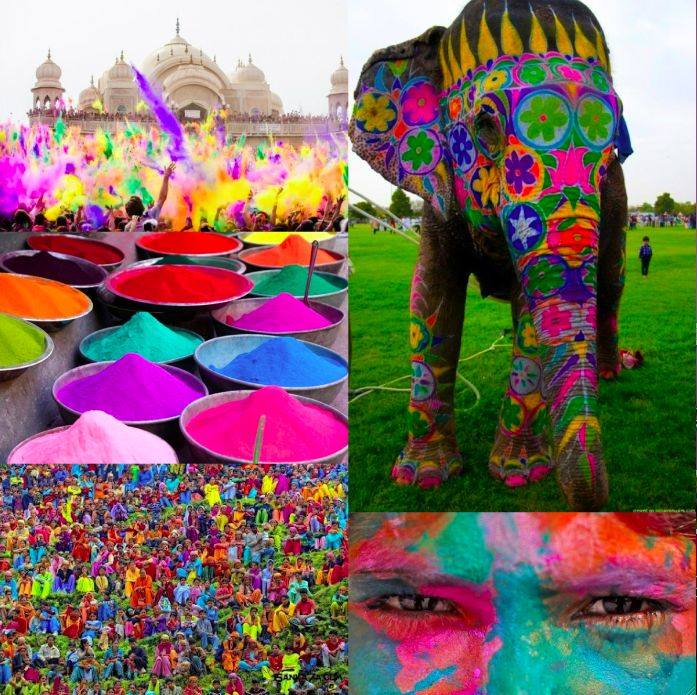Festivals are basically time for Rejoicing, Re–uniting and Rejuvenating. Some festivals are celebrated to follow the age-old tradition down the years. India, being a secular country, it’s people follow different traditions and different rituals according to their religion. Each religion has its unique tradition but all the religions enforce on the same path of life – Humanity, Compassion, Respect and Love for fellow human beings.
Mostly, we Indians follow certain traditions blindly without actually understanding them and hence tend to walk beyond the realm of rational thinking. Indians choose the heart over their heads and lose their capability to think rationally. Although this has lead to our tradition and culture being ridiculed, it still holds a significant place in the Indian history.
Let us take the example of Spring Festivals –Spring is the season of Rejuvenation. People all over India celebrate the onset of Spring with happiness and enthusiasm as the New year begins in Spring traditionally. We will take a look at how the people of various parts of India celebrate the onset of Spring.
- HOLI, the festival of colours, which used to be celebrated in North India has now become a fun filled event filled with colours and celebrated by all people of India. They throw colour powder or colour liquids on each other, making it colourful and dusty welcoming the spring.
- BAISAKHI – This harvest festival in Punjab is one of the most popular events during the year and it usually falls on the 13th of April. The community usually comes together to harvest the wheat and those who aren’t involved in the harvesting will play the drums to keep the people going. After the harvesting, they perform the Bhangra, a traditional dance that is a part of the evening’s celebrations with the whole community celebrating together.
- NAVROZE is the festival which originates in the Zoroastrian population, a minority in India, but is celebrated by many families across the region, mainly in Gujarat and Sind. Homes are decorated and large family meals are the tradition of this festival. Coloured powder is used to lay elaborate patterns in the street and outside the homes.
- BIHU is the festival of Assam in North east India. It is celebrated for three days and marks the start of the new year there as well as seeding time in spring. The first day is dedicated to the cows, which are vital to agriculture. The second day is spent visiting friends and relatives, along with plenty of singing and dancing. On the third day, deities are worshipped.
- EASTER is celebrated by the Christians, although they are a minority in India. Many of the traditions seen throughout the world are found here in India too. They visit their churches and pray. Easter is particularly noticeable in Mumbai and Goa.
- UGADHI – This New Year festival usually falls in April and is celebrated by the Hindu people in the Deccan region, the present Andhra Pradesh, who follow the Saka calendar. There are several traditions followed in the festival but the family meals are the best part of it. They make the traditional dish with neem buds, jaggery, green chilli, salt, tamarind juice and unripened mango, each ingredient signifying six emotions that people can feel.
- THRISSUR POORAM, a festival in the city of Thrissur in Kerala is mainly a Hindu festival but most people in the city join in the celebrations. It is celebrated with impressive fireworks display held over two evenings, and also a series of musical performances with traditional drum groups providing part of the entertainment.
- CHITHIRAI FESTIVAL – The Chithirai Festival is one of the biggest celebrations in Madurai. It re-enacts the wedding of Lord Sundareswarar (Siva) and Goddess Meenakshi (Lord Vishnu’s sister). Legends believe that Lord Vishnu came to witness the wedding mounted on a golden horse. So the statue of Golden horse is carried by the people across the river Vaigai and the crossing is witnessed and joined by thousands of devotees.
- BUDDHA PURNIMA – Buddha Jayanti celebrates the birth, enlightenment and death of Lord Buddha. It is the most sacred Buddhist festival. On this day the Buddhists perform prayer meets, sermons and religious discourse, recitation of Buddhist scriptures, group meditation, processions and worship of the statue of Buddha.
These are few of the well known and popular festivals celebrated across India. So it is not surprising that India, rich in its colourful traditions and cultural heritage is hailed as a country with exotic wonders and attracts visitors from other countries in galore all through the year.

